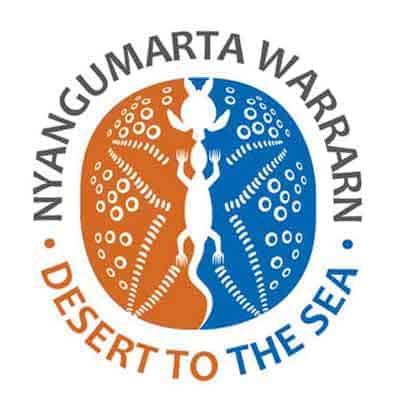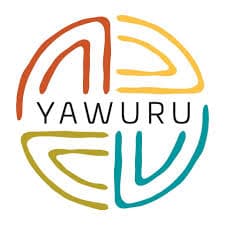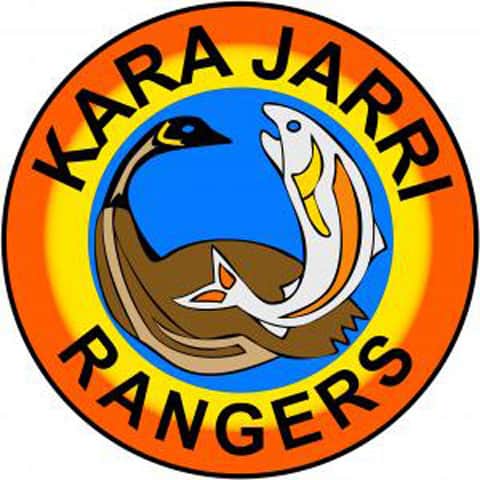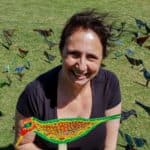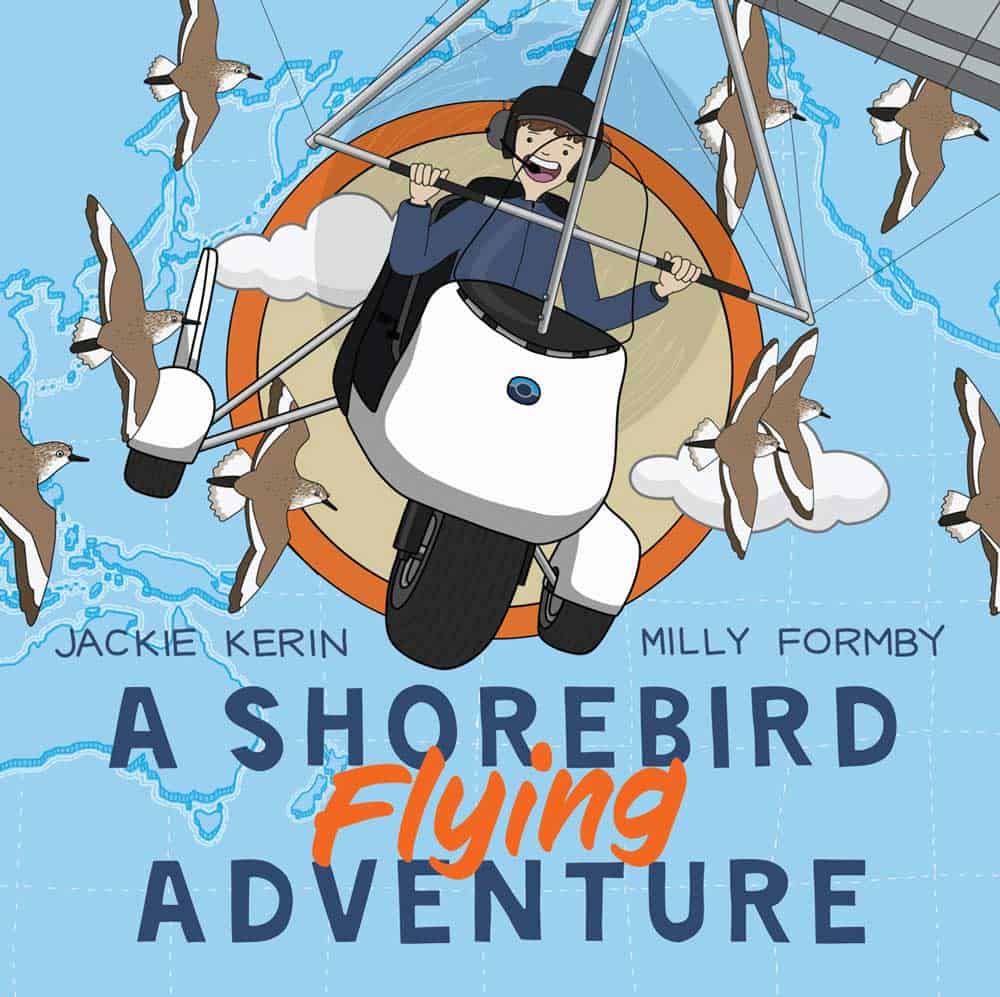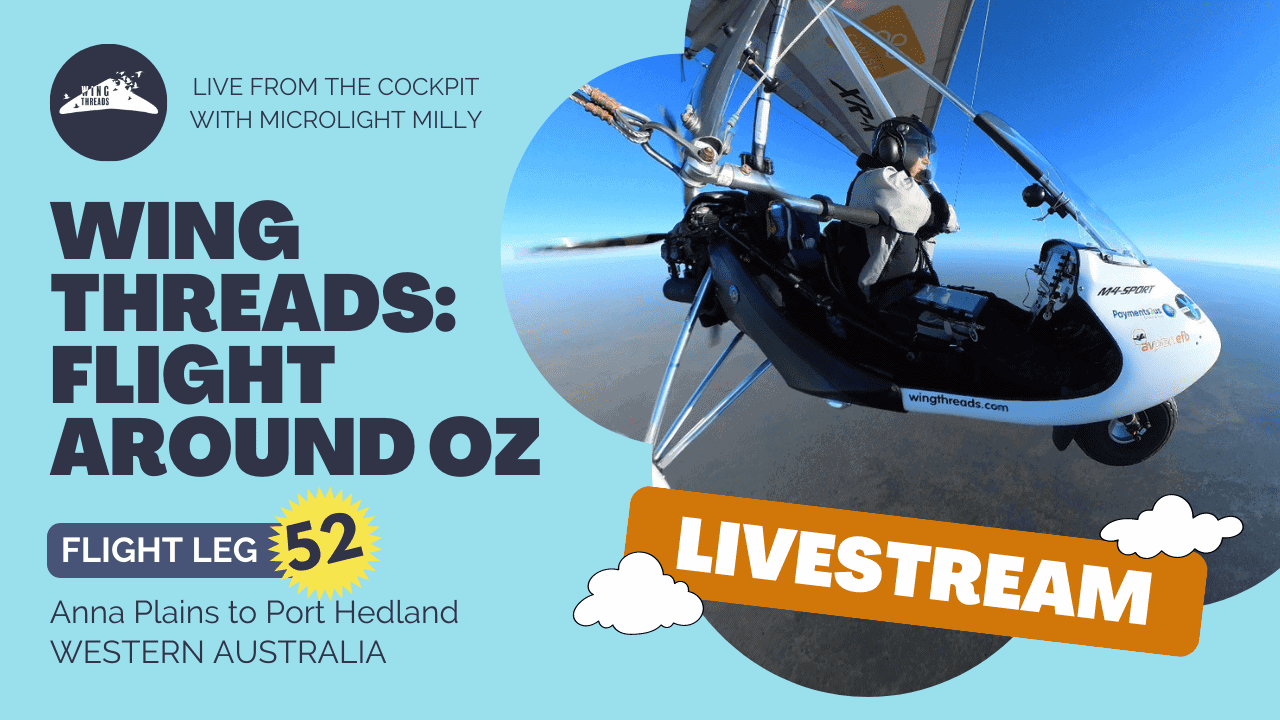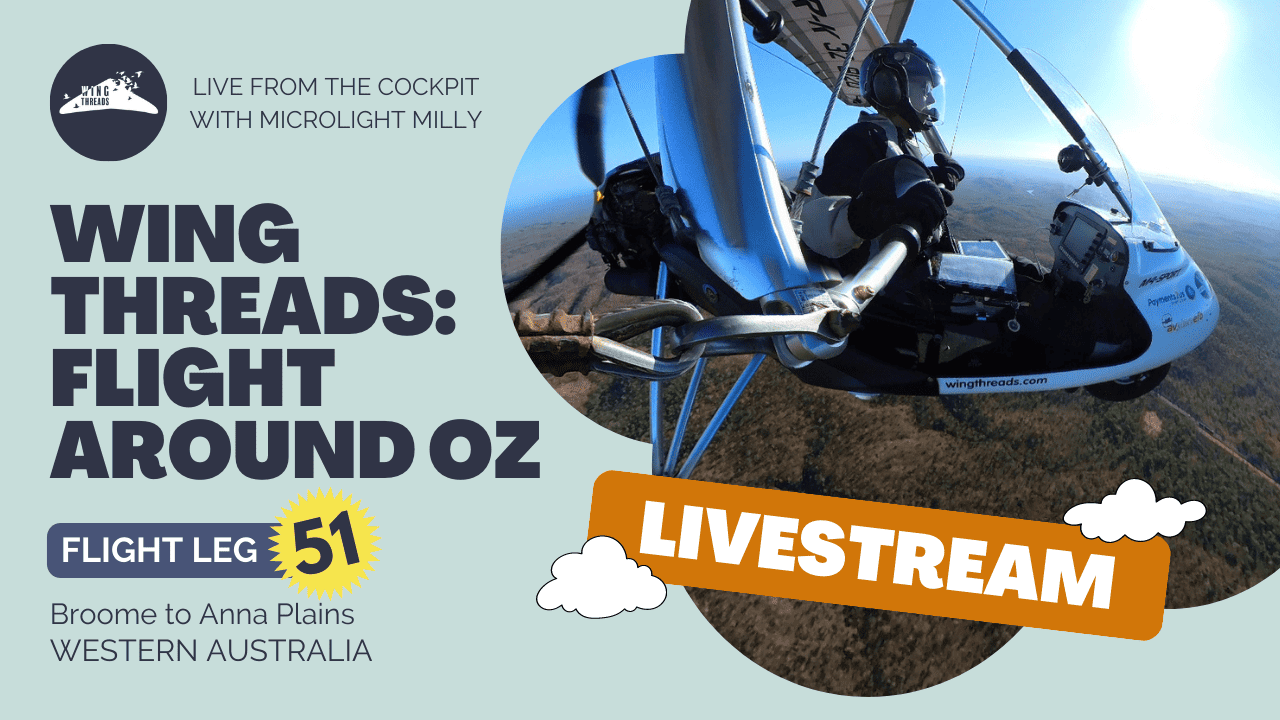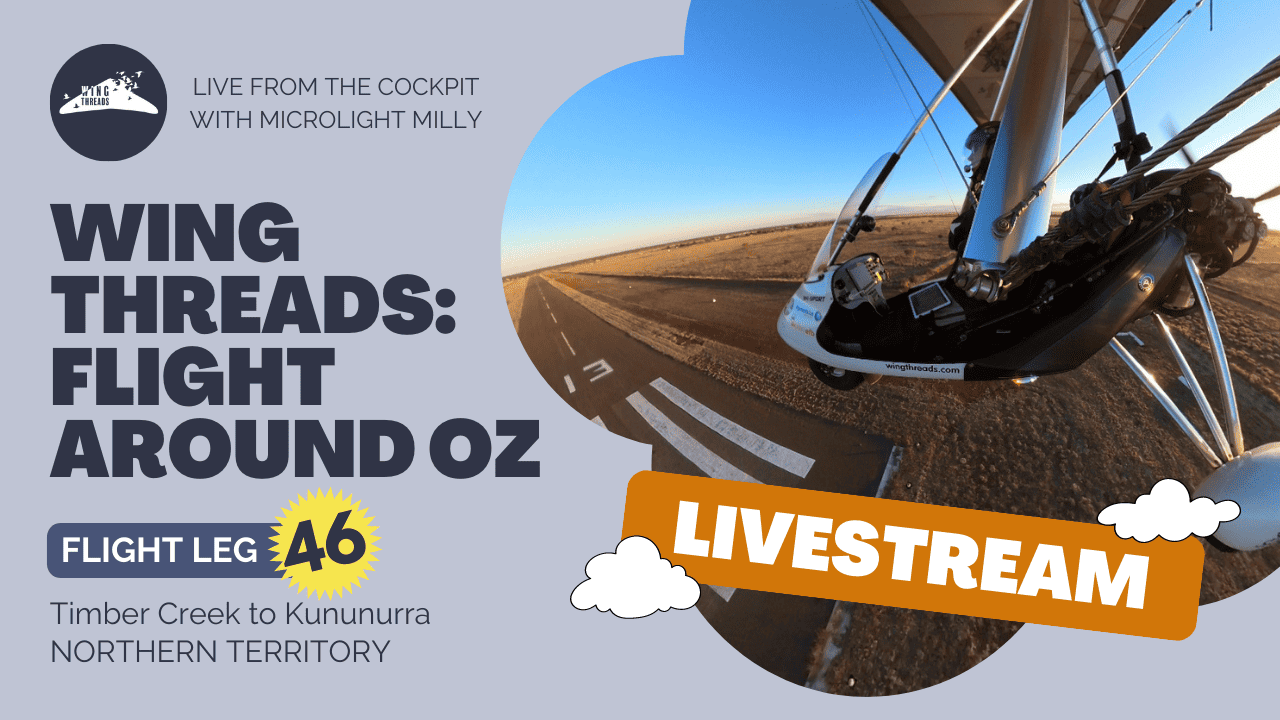Almost neighbours
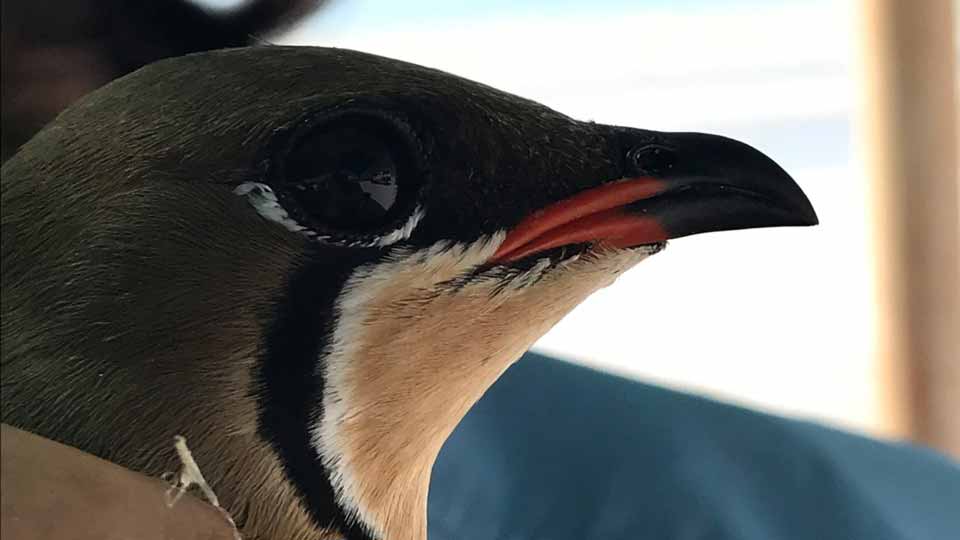
All four birds are now in Mainland South East Asia. SEC and SHE remain in Cambodia and SEP in Thailand, while SUN is now located in Vietnam.
SHE remains in the Tonle Sap Lake floodplains, with SEC, SEP and SUN all using areas of intensive agricultural and/or aquaculture use. It appears that the highly modified agricultural land does not seem to deter the birds remaining in these areas. The maximum distance between SUN, SHE, SEP and SEC is approximately 750km – just down the road by Australian Outback standards!
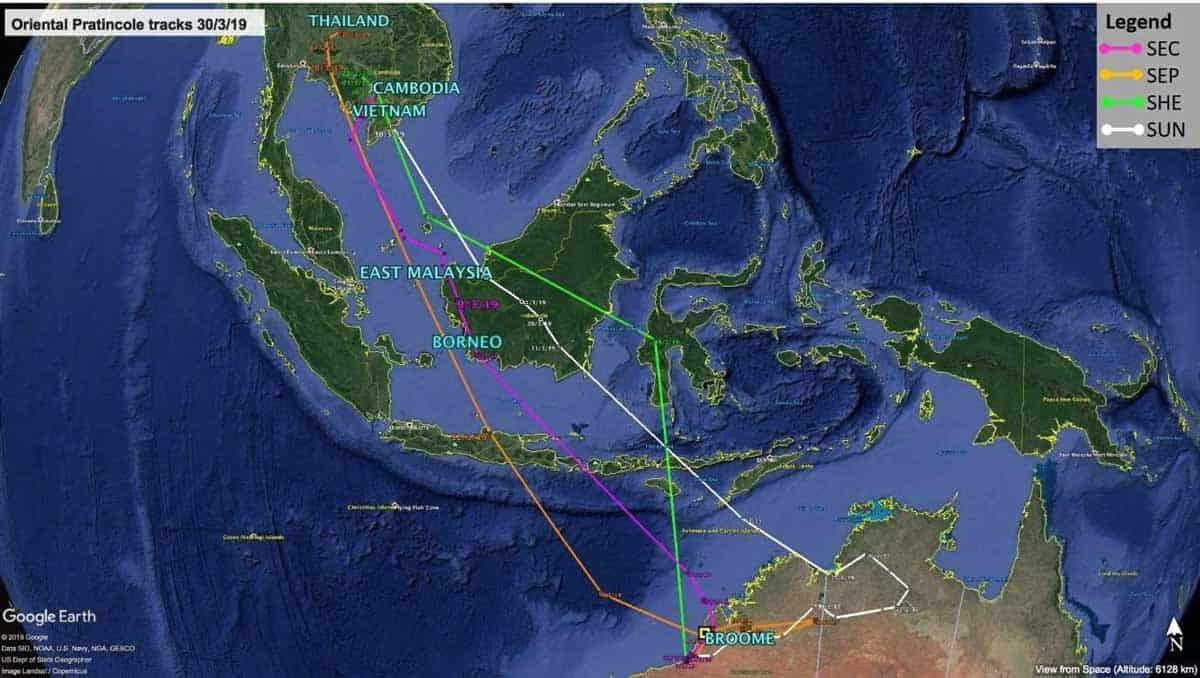
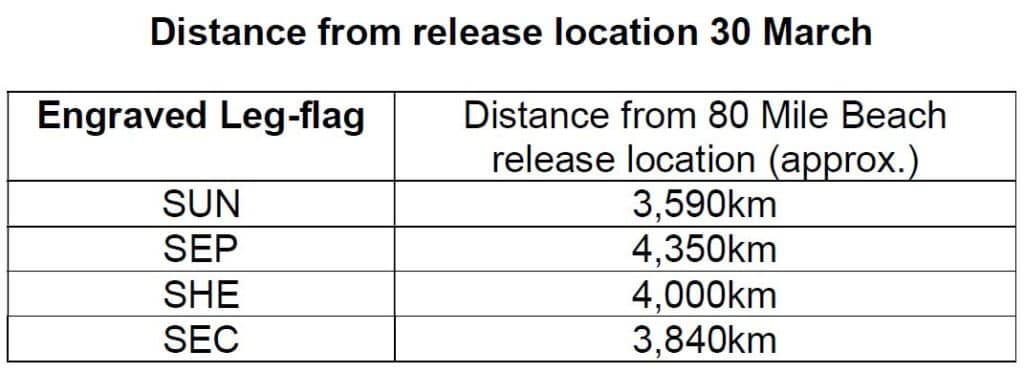
With little onward movement of any of the birds since their arrival on the Asian mainland over the last month, we suspect that most have reached their breeding areas but not necessarily their exacting breeding location yet. It will be interesting to see what further movements do occur, if any, and when birds appear to start nesting.
If they do start nesting at these locations soon, it will be a strong indication that their departure from Australia in February is driven by the need to get back to the breeding areas to claim a territory as early as the habitat becomes suitable. This is despite leaving North West Australia when there was a plethora of insects available for them there.
Overall, we should perhaps expect very little further movement of any of the Oriental Pratincoles. It will be particularly interesting to see what we can detect of their breeding cycle via the satellite trackers.
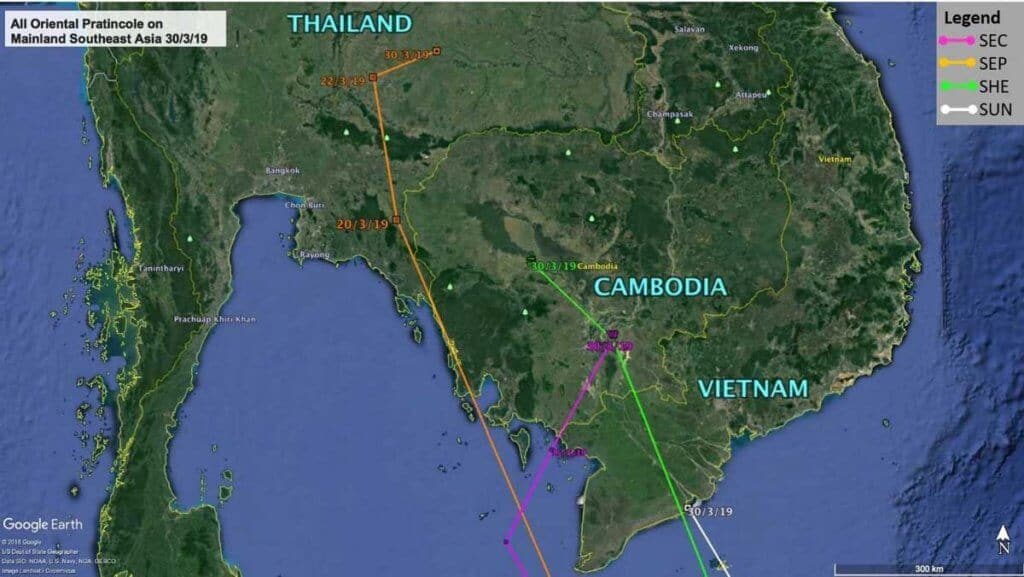
Oriental Pratincoles on the move
Good morning vietnam
Leg Flag SUN (PTT 83591)
From the 23rd-28th March, SUN was located in the Sri Aman District of East Malaysia, situated on the Lupar River (Figure 3a.). This District is known for its trade in palm oil, rubber, pepper and timber.
On 30th March (and approximately 1,065km north), SUN is now in the Mekong River Delta region of Vietnam. SUN is located in the Tran De District, 25km east of Soc Trang – the capital of Soc Trang Province (Figure 3b.). The Tran De District is known for its mudflats – popular for bird watching – rice paddies and prawn farms and is situated along the banks of the Bassac River.
This location is approximately 3,590km from the release site at 80 Mile Beach in North West Australia
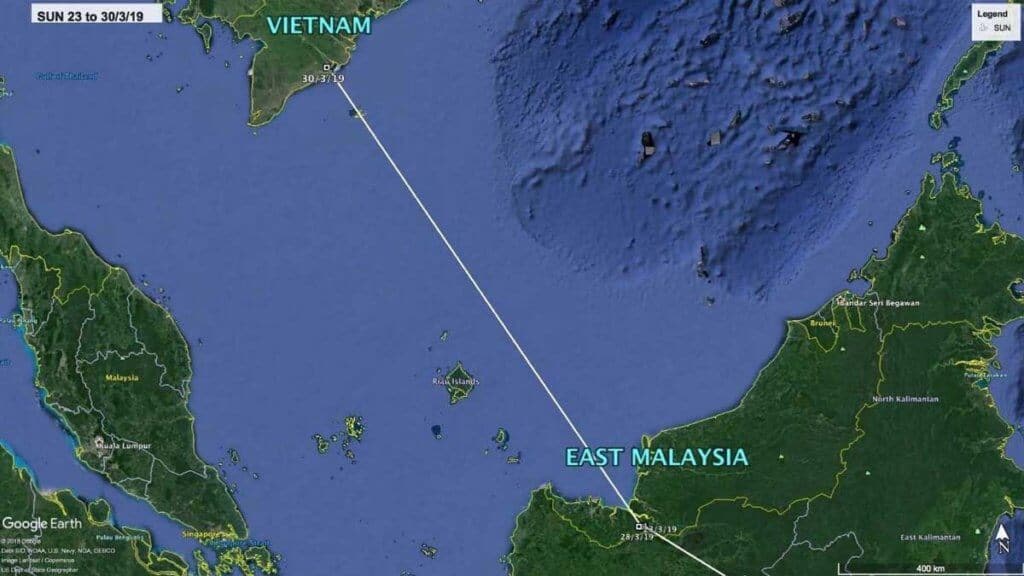
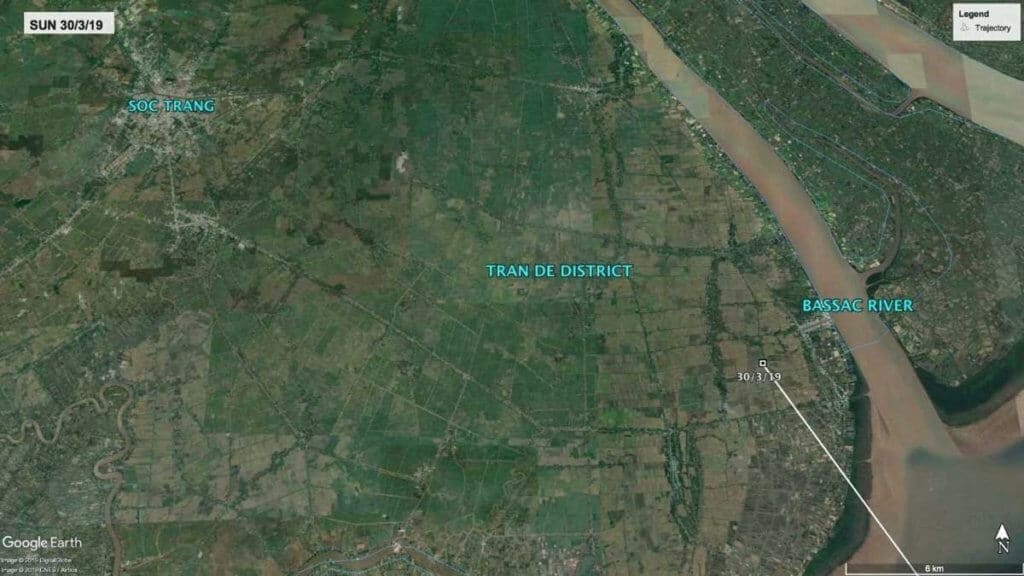
A big push further north
Leg Flag SEP (PTT 83593)
In our last report, SEP was located in the Khan Thale So District, Nakhon Ratchasima Province in Thailand on 22nd March. Since then, SEP has flown approximately 100km north-east and from 30th March has been in the north-east part of this province in the Khok Klang sub-district. Again, SEP is in an area dominated by agriculture with rice, tapioca and sugar cultivated in this region.
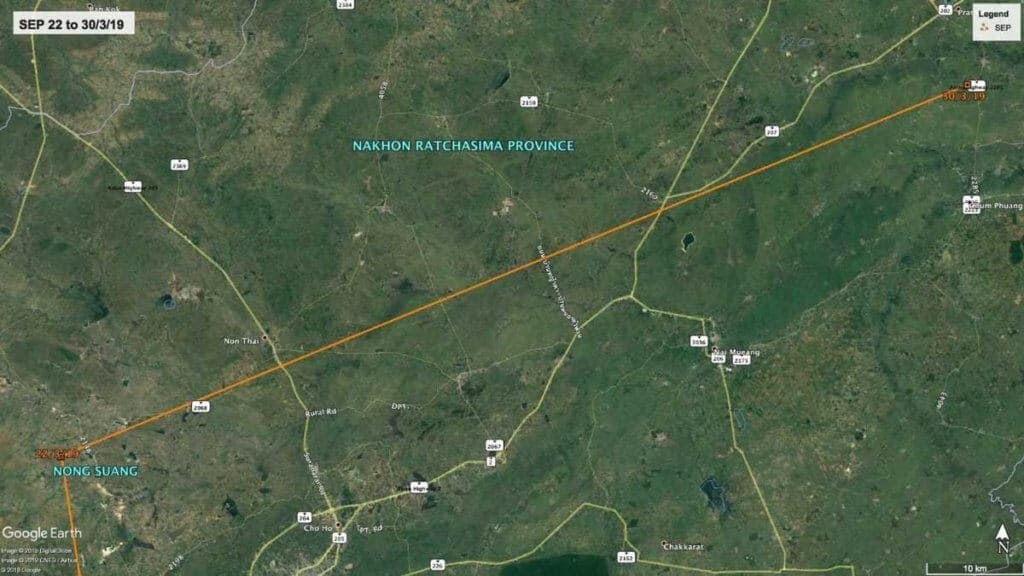
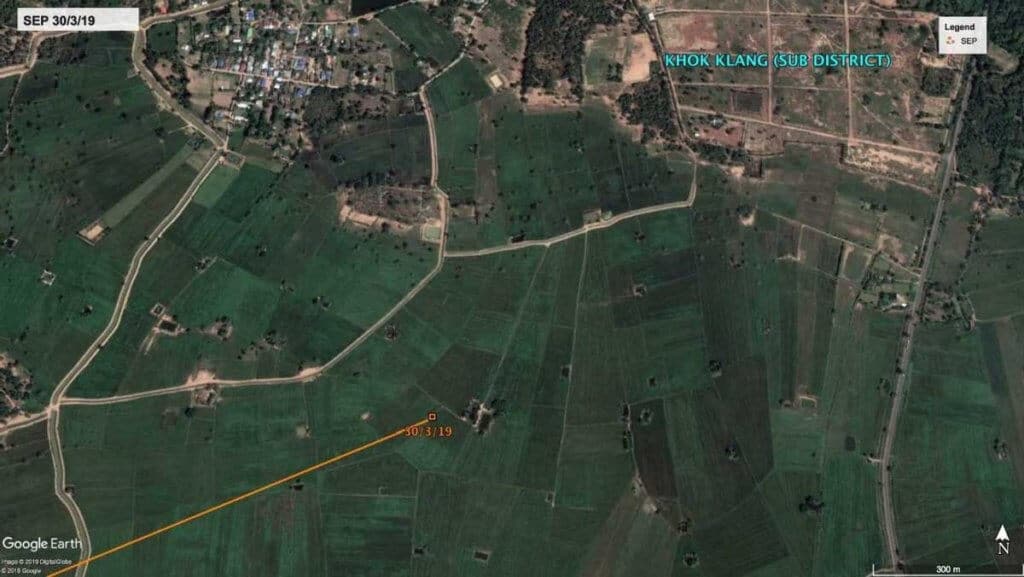
Still roosting on Tonle Sap Lake
Leg Flag SHE (PTT 83595)
For the past five weeks, SHE has continued to inhabit the Tonle Sap Biosphere Reserve, Cambodia. With the breeding season for Oriental Pratincoles expected between April to June, we wait with interest for SHE’s next movements.
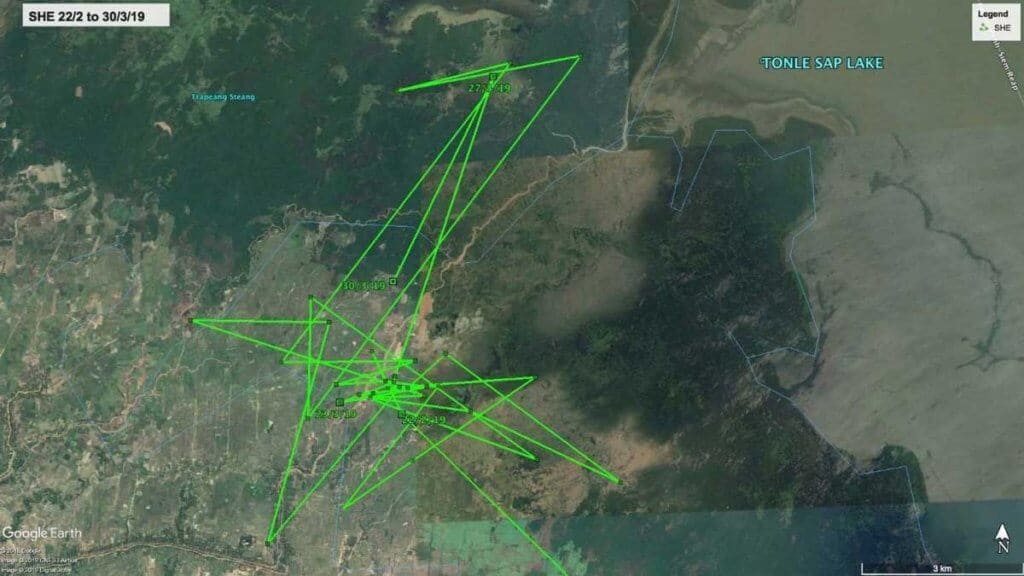
A short trip into town
SEC (PTT 83596)
SEC has not moved since our last report, remaining for the past 10 days in the Prey Veng Province of Cambodia, 40km north-east of Phnom Phen. This area is known as the great green belt of Cambodia due to monsoonal rains from May to October depositing silts on the plains, which drives the regions high agricultural yields. SEC is probably feasting on the rich insect life in these fertile areas.
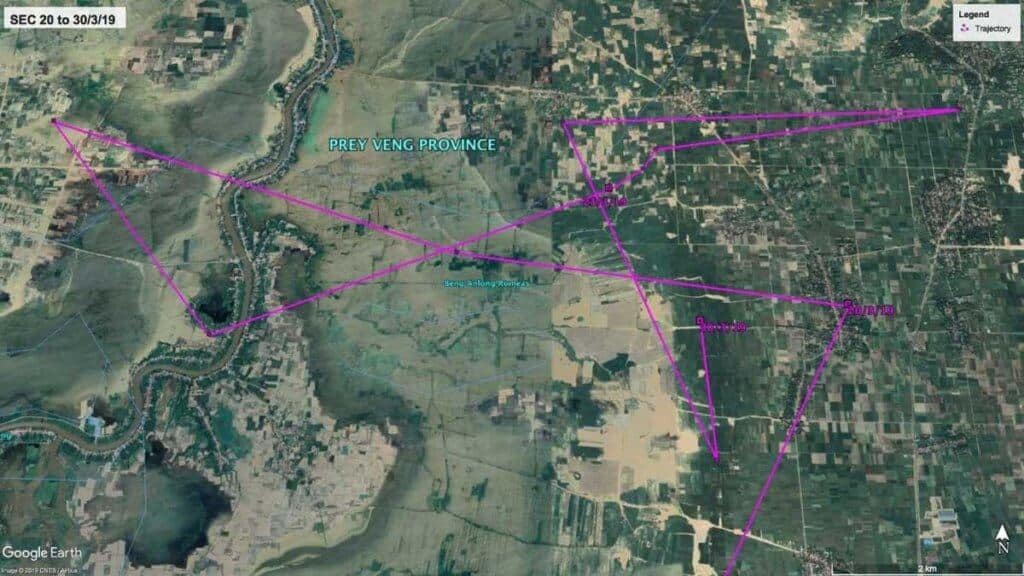
Download a PDF copy of this report – Oriental Pratincole Satellite Tracking Report Number 5
Acknowledgements
Clive Minton
The extensive and expensive satellite tracking program we have set up in NWA has only been possible through the efforts and generosity of a large number of people and organizations. It is difficult to know where to start with the formal acknowledgements so I will list them – but not in any particular order of priority.
- The members of the AWSG NWA 2019 Wader and Tern Expedition and similar NWA expeditions in previous years, are particularly thanked for their efforts in the field in catching, banding and deploying transmitters on a range of species.
- Landowners are especially thanked for permission to go onto their property to enable us to catch various species in order to deploy the satellite transmitters. In particular we thank Anna Plains Station for giving us the freedom to roam over large areas of grazed grassland when counting and catching target species.
- AWSG acknowledges the Yawuru People via the offices of Nyamba Buru Yawuru Limited for permission to catch birds on the shores of Roebuck Bay, traditional lands of the Yawuru people.
- AWSG acknowledges the Karajarri and Nyangumarta people for permission to catch birds to be marked for this project on the shores of 80 Mile Beach, traditional lands of the Karajarri and Nyangumarta.
- The cost of the satellite transmitters, which cost around $5000 each, and the satellite downloading costs (around $1000-1500 per month) have been met by a variety of sources. Private individuals (Charles Allen and Doris Graham) have made most generous individual contributions. Kate Gorringe-Smith and her team of artists involved in The Overwintering Project made a large, generous donation from funds raised during their various public exhibitions. The annual NWA Expedition members, collectively, also provided significant funds each year.

